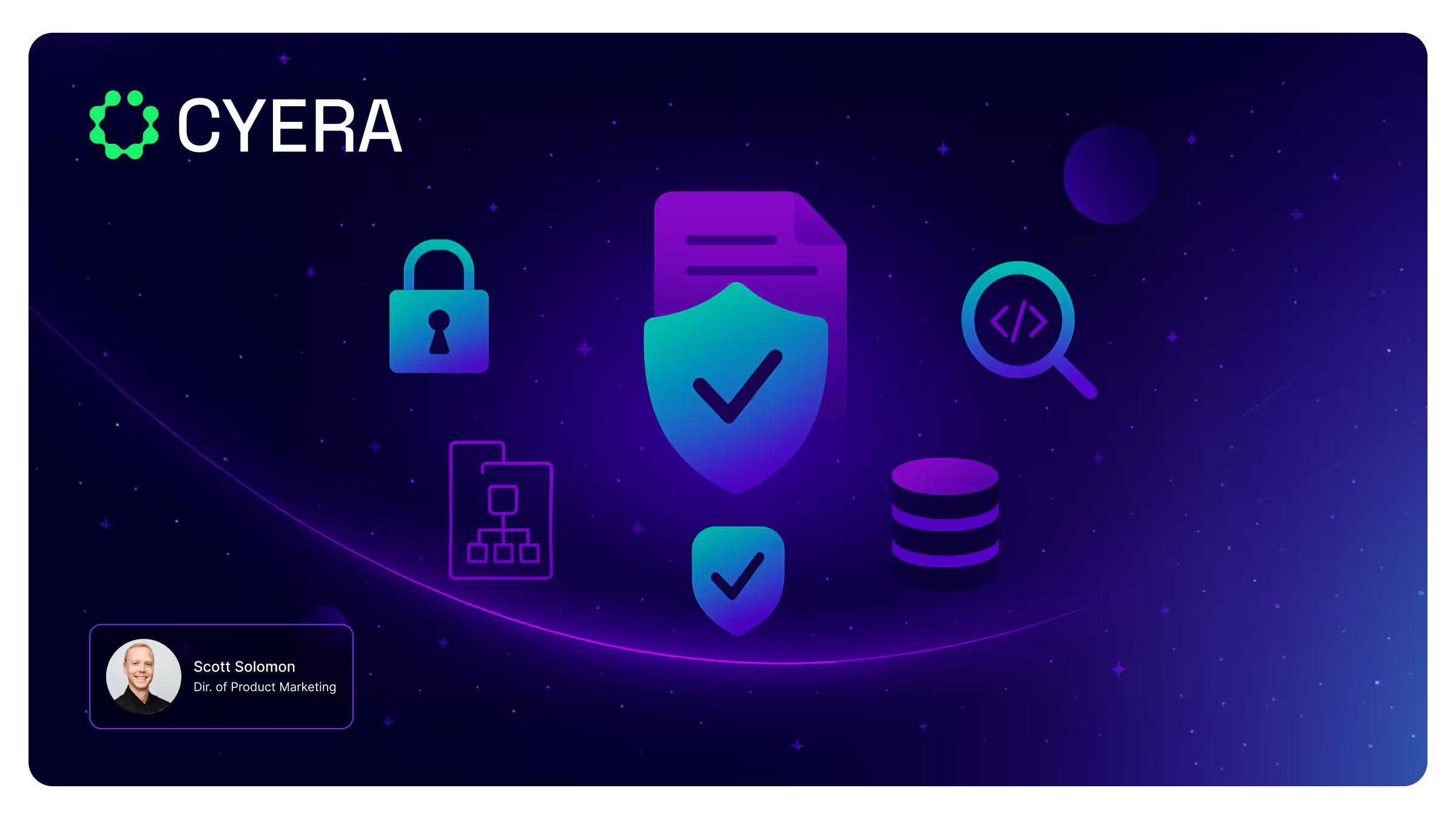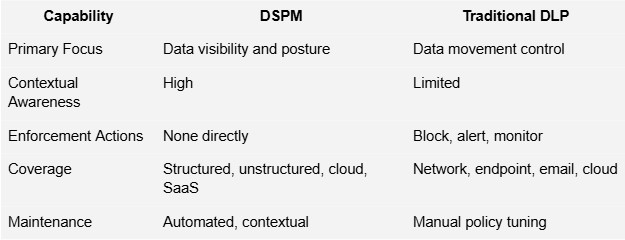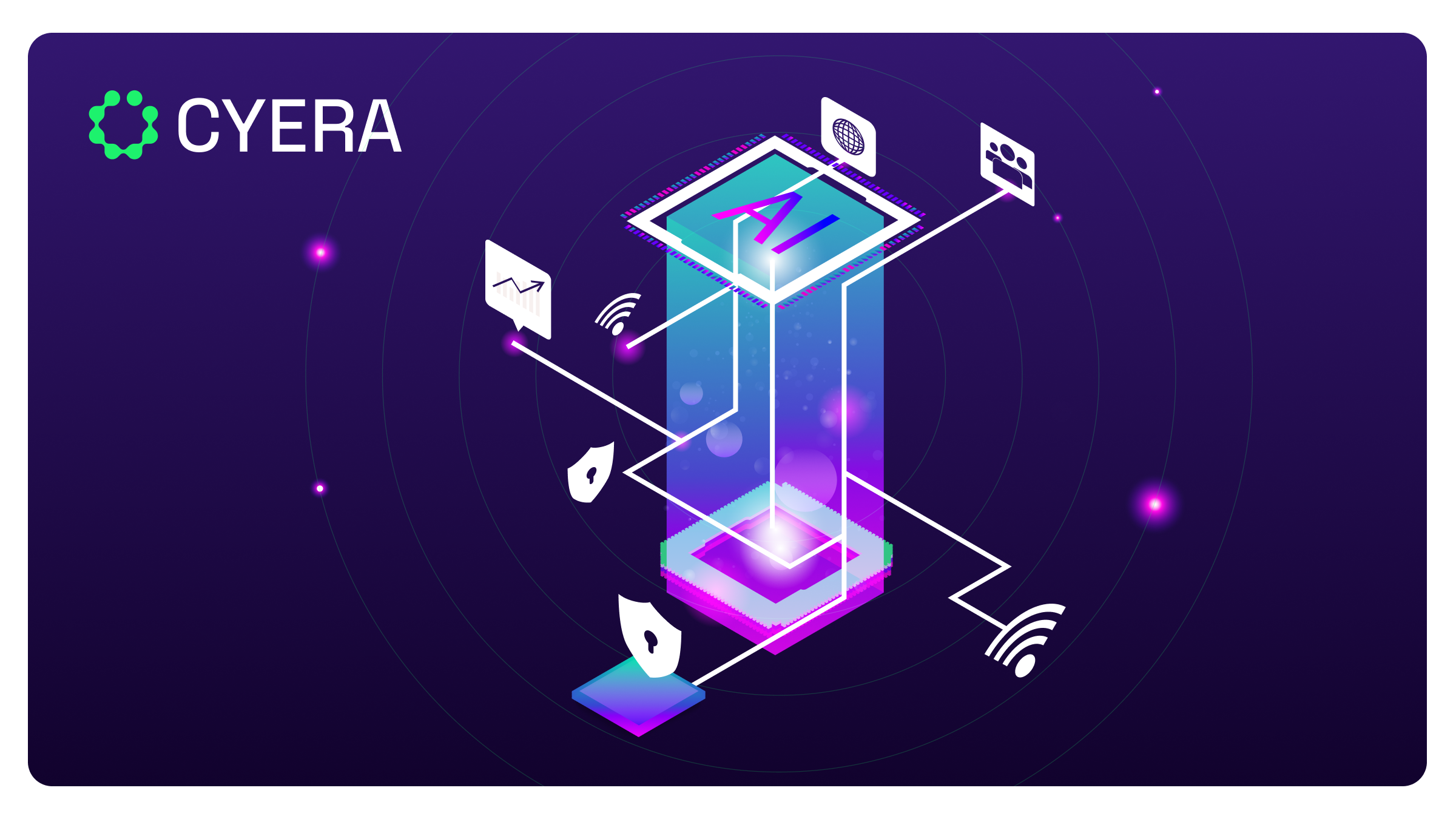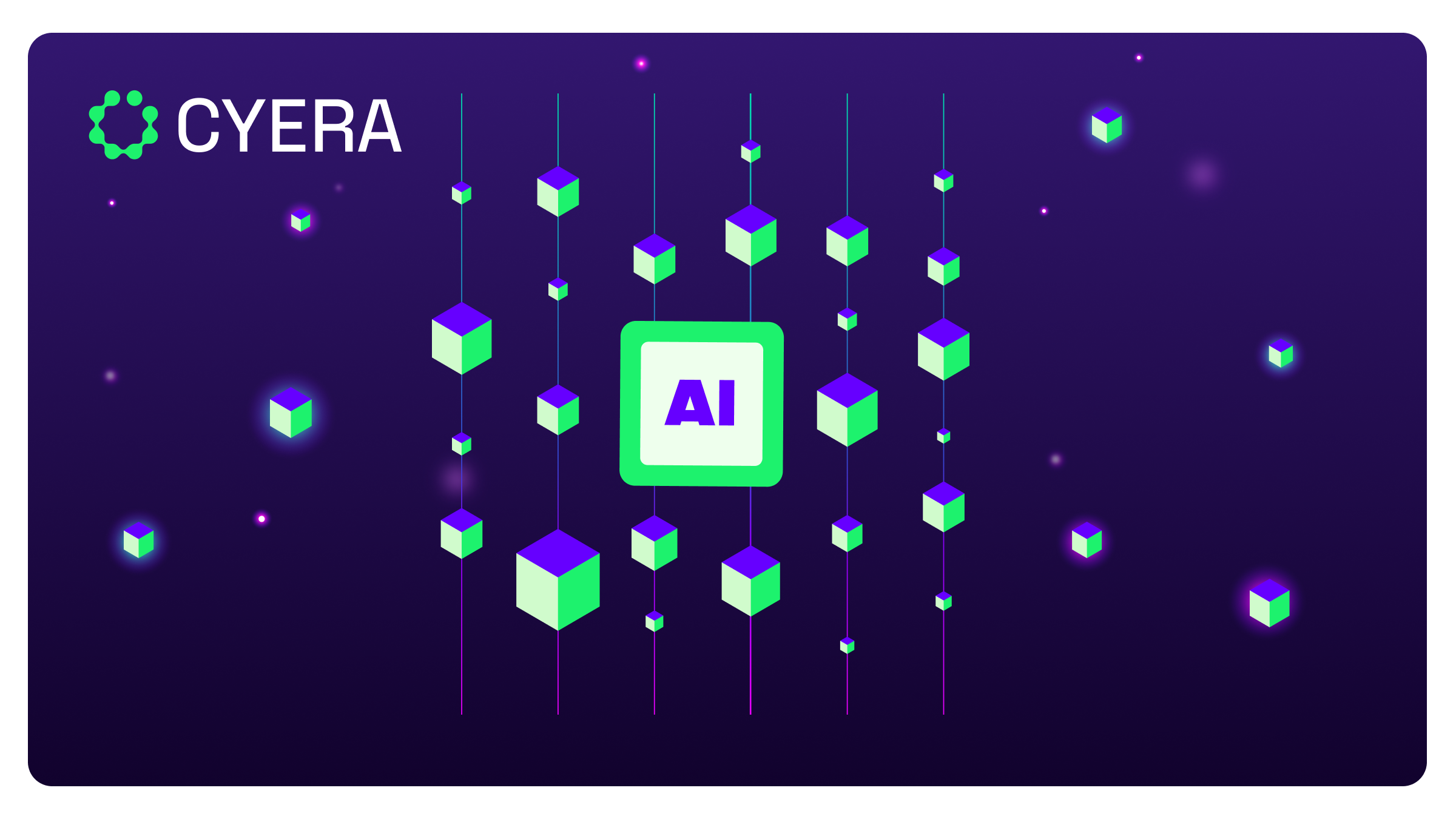DSPM contre DLP : repenser la sécurité des données à l'ère de l'IA

C'est une question que les responsables de la sécurité se posent de plus en plus souvent aujourd'hui. Quelle est la différence entre DSPM et DLP, et pourquoi est-ce important aujourd'hui ?
Nous ne protégeons plus un périmètre statique et ne verrouillons plus quelques bases de données derrière un pare-feu. Les données sensibles sont fluides. Il est présent dans les services cloud, les outils de collaboration, les appareils non gérés et, de plus en plus, dans les systèmes d'IA génératifs. Les anciennes hypothèses ne sont plus valables, et bon nombre des outils sur lesquels nous nous sommes appuyés, en particulier la DLP traditionnelle, commencent à ressembler davantage à des solutions palliatives qu'à des solutions.
C'est là que commence réellement cette discussion entre DSPM et DLP. Pas dans les fonctionnalités ou les acronymes, mais dans la façon dont nous repensons le rôle de la sécurité des données dans un monde qui évolue plus rapidement que n'importe quelle politique manuelle ne peut suivre.
Ce que le DSPM résout réellement
Si vous travaillez dans le domaine de la sécurité depuis un certain temps, vous savez à quel point il peut être difficile de répondre à de simples questions concernant vos données. Où sont stockées nos informations sensibles ? Qui y a accès ? Est-il surexposé ? Cette exposition est-elle intentionnelle ?
La plupart des environnements actuels ne disposent pas d'une seule source fiable pour répondre à ces questions. Le DSPM, ou gestion de la posture de sécurité des données, est conçu pour combler cette lacune. Ce n'est pas un contrôle. Ce n'est ni un blocage ni une règle. Il s'agit d'une couche d'intelligence conçue pour cartographier en permanence vos données, où qu'elles se trouvent, et vous aider à comprendre le contexte qui les entoure.
Cela inclut la découverte sur les plateformes cloud, les applications SaaS, les partages de fichiers et les données structurées. Elle inclut une classification qui va au-delà des expressions régulières, intégrant le contexte commercial et les exigences réglementaires. Et surtout, elle inclut une analyse qui fait le lien entre les données, l'identité et l'accès.
Avec un Solution DSPM, tu ne voles pas à l'aveugle. Vous pouvez avoir une vue d'ensemble de l'exposition de vos données dans tous les environnements. Cela signifie que vous savez quelles équipes utilisent une adresse IP critique, quels fichiers sont ouverts à un trop grand nombre d'utilisateurs et quelles sont les zones où les autorisations d'accès ne suivent pas le rythme des politiques.
Pour les équipes de sécurité qui essaient de hiérarchiser les risques au lieu de réagir à chaque alerte, ce contexte est précieux.
Pourquoi la DLP est toujours importante
La prévention des pertes de données, malgré ses failles, constitue un élément fondamental de la sécurité des entreprises pour une bonne raison. Une fois configuré correctement, Outils DLP peut empêcher les données sensibles de quitter votre environnement. Il peut détecter des éléments tels que quelqu'un qui essaie d'envoyer des dossiers clients par e-mail à une adresse personnelle ou de télécharger des rapports financiers sur une plate-forme de stockage non autorisée.
Le problème est que la DLP traditionnelle a du mal à trouver l'échelle et les nuances. Les règles sont fragiles. Les alertes sont bruyantes. Et l'application de la loi manque souvent de contexte. C'est pourquoi de nombreux programmes de sécurité ajustent la DLP de manière si stricte qu'elle n'arrête rien, ou si largement qu'elle bloque le travail légitime et frustre les utilisateurs.
Mais soyons clairs. La DLP reste une couche d'application essentielle. La capacité d'arrêter l'exfiltration, d'appliquer des contrôles sur les terminaux, les réseaux ou le trafic cloud est précieuse. Ce qui manque, c'est l'intelligence nécessaire pour savoir quand et où ces contrôles doivent être appliqués. C'est là que le DSPM change l'équation.
DSPM contre DLP : différentes fonctions, un objectif
Il est facile de penser que ces deux outils sont concurrents. Mais dans la pratique, ils ont des objectifs très différents.
Le DSPM vous sensibilise. Il vous indique quelles données existent, où elles se trouvent, qui peut y accéder et ce que cette exposition signifie du point de vue du risque.
La DLP vous permet de faire appliquer la loi. Il agit lorsque des données sensibles sont déplacées d'une manière contraire à la politique. Il peut bloquer, alerter, mettre en quarantaine ou enregistrer des données en fonction de règles prédéfinies.
Voici une comparaison rapide qui montre comment ils se complètent :

Tu as besoin des deux. Le DSPM vous explique ce qui se passe et pourquoi c'est important. DLP agit sur la base de ces informations. Ensemble, ils offrent une boucle fermée de visibilité et de contrôle.
Omni DLP : une voie à suivre plus intelligente
Chez Cyera, nous avons constaté une lacune. Les systèmes DLP traditionnels ne suivaient pas le rythme des environnements qu'ils étaient censés protéger. Nous avons donc construit quelque chose de nouveau.
Omni DLP associe l'intelligence de la DSPM à la puissance coercitive de la DLP. Il est conçu pour comprendre le contexte complet de vos données et affiner les contrôles en conséquence. Cela signifie qu'il ne se contente pas de rechercher des mots clés ou des types de fichiers. Il évalue la classification des données, le rôle de l'utilisateur, l'emplacement et l'action tentée.
Ainsi, au lieu de bloquer chaque fichier Excel que quelqu'un essaie d'envoyer, il bloque celui qui contient des modèles de tarification sensibles transmis à un domaine tiers. Ce niveau de précision est important lorsque vous essayez de trouver un équilibre entre sécurité et productivité.
Omni DLP évolue également en fonction de votre environnement. Au fur et à mesure que DSPM cartographie vos données et met à jour sa compréhension des risques, ces informations sont directement intégrées au moteur DLP. Il en résulte une mise en œuvre plus intelligente avec moins de bruit et une meilleure adaptation à l'utilisation réelle.
Où DSPM et DLP travaillent ensemble
Passons en revue quelques exemples où ces deux technologies se recoupent.
Risque interne
La DSPM souligne qu'un ingénieur senior dispose d'un large accès aux fichiers de conception contenant des technologies propriétaires. DLP applique des contrôles pour empêcher les téléchargements vers des emplacements non autorisés, tels que des disques personnels ou des référentiels non approuvés.
Gouvernance du cloud et du SaaS
DSPM détecte les fichiers sensibles dans des outils collaboratifs dont les paramètres de partage sont trop permissifs. La DLP limite le partage externe de ces fichiers tout en permettant à la collaboration interne de se poursuivre sans interruption.
Gestion de la conformité
DSPM dresse un inventaire des données réglementées dans votre environnement. DLP vous configure ensuite pour préparation à la conformité en appliquant des contrôles pour prévenir les violations, comme le blocage de l'envoi de numéros de cartes de crédit par e-mail à l'extérieur de l'organisation.
Gouvernance des modèles d'IA
Le DSPM identifie les ensembles de données utilisés dans la formation à l'IA qui contiennent des données sur les clients. La DLP impose des limites quant à ce qui peut être exporté, téléchargé vers des outils externes ou utilisé dans le développement de modèles tiers.
La combinaison crée une boucle de rétroaction. Exposition des surfaces au DSPM. DLP applique la politique. Au fur et à mesure que vos données évoluent, votre stratégie de protection évolue également.
Perspectives d'avenir
L'avenir de la sécurité des données ne consistera pas à rédiger de nouvelles règles. Il s'agira de comprendre le contexte, de s'adapter au changement et d'aligner les contrôles en fonction du risque et de la précision chirurgicale.
Le DSPM vous apporte de la clarté. La DLP vous donne le contrôle (mais uniquement grâce à une classification précise des données). Lorsque vous les connectez, lorsque la visibilité alimente l'application de la loi et que l'application renforce la visibilité, vous obtenez quelque chose de plus fort.
La combinaison DSPM et DLP n'est pas une tendance, c'est une nouvelle voie à suivre.
Obtenez une visibilité complète
avec notre évaluation des risques liés aux données.



